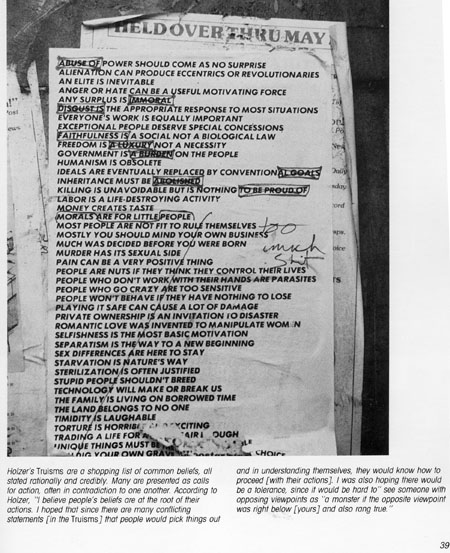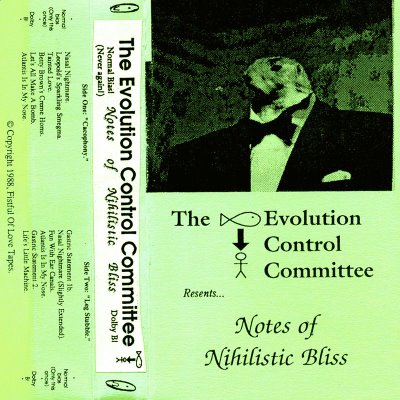An early Jenny Holzer art work, from Street Art, by Alan Schwartzman, 1985:

We're discussing Jenny Holzer over on Paddy Johnson's page. Johnson and others have noted the connections between Holzer's "truisms," currently the subject of a museum show, and the 140-character text squibs people are writing on twitter.com--specifically, Johnson is taking on the meme "Jenny Holzer is the patron saint of Twitter." My take on that (copied and pasted from Johnson's comments):
When you say Holzer's actual “Truisms…are being published under Holzer's name on Twitter,” as far as we know that is not Holzer doing that, right? [Johnson confirms it isn't.]
It would be funny if it was. Holzer's career started in the late '70s with her slogans on typeset pages tacked to NYC phone poles. They looked like the work of an anonymous nut, and the anonymous nut is surely the patron saint of the Internet.
I personally think the giant LED versions are an unnecessary detour between the intimacy and strangeness of her early work and the intimacy and strangeness of reading random Holzer-like sentences online. She started out as what we would now call a "relational" artist and is being imitated by the current cyber-versions of relational artists, but what she's famous for are her overdetermined art world objects. Commodification isn't bad in and of itself but I've never understood the logic of it in her case.


